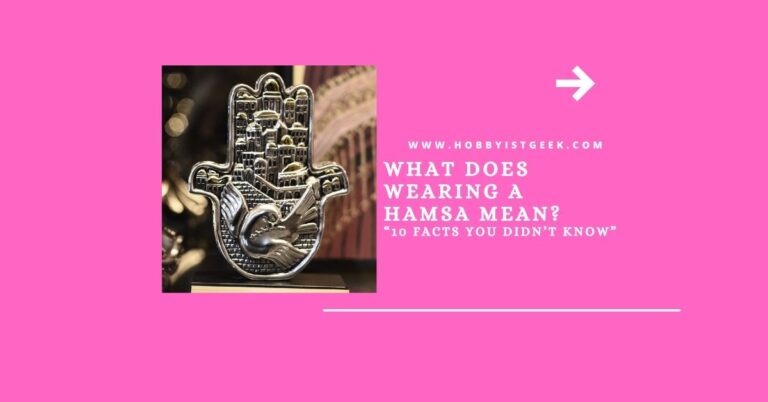Evil Eye Emoji: Everything You Need To Know!
Using the Evil Eye Emoji
When it comes to emojis, the options seem endless.
From smiling faces to food items, there’s an emoji for nearly every emotion or situation. One emoji that has caught the attention of many is the Evil Eye emoji.
This intriguing symbol has gained popularity and is being used in various ways across different platforms. The Evil Eye emoji features an eye with a blue pupil and a menacing glare, representing protection against negative energy and ill intent.
Its symbolism dates back centuries to various cultures where it was believed to ward off harm and bring good luck. Today, this ancient symbol has found its way into our digital world through emojis.
One of the primary uses of the Evil Eye emoji is as a form of self-expression and personal style. People who resonate with its meaning incorporate it into their online profiles, bios, or even tattoo designs.
It serves as a visual representation of their desire for protection from negative vibes or as a signifier of their belief in mystical practices. Furthermore, the Evil Eye emoji has become part of internet culture and meme trends.
The versatility of this powerful symbol allows individuals to incorporate it into humorous or sarcastic contexts online. Memes featuring the Evil Eye emoji often playfully exaggerate its supposed powers by applying them to everyday situations or humorous scenarios.
As emojis continue to evolve and adapt to our online language, creative users have embraced a trend called Emoji Mashup. This involves combining various emojis together to create unique compositions or expressing complex ideas through visual art forms.
With its striking design and profound symbolism, incorporating the Evil Eye emoji in mashups adds an extra layer of meaning and intrigue. The usage of the Evil Eye Emoji spans beyond just literal interpretations; it represents cultural significance, self-expression, humor, mysticism, and creativity all rolled into one emoticon-like symbol.
Whether people believe in its protective powers or simply find it visually captivating, this representation holds power both online and offline. As emojis continue to shape our communication and expression, it is fascinating to see the emergence of symbols like the Evil Eye emoji in our digital lexicon.
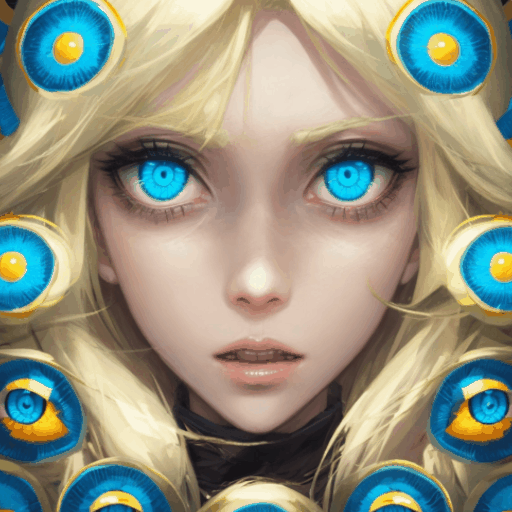
The Evil Eye Emoji Goes Mainstream
The Evil Eye Emoji has taken the world by storm, transcending language barriers and becoming a mainstream symbol of cultural significance. In this era of social media dominance, emojis have become an essential part of our digital communication.
They express emotions, convey messages, and even serve as visual representations of superstitions and mystical beliefs. The Evil Eye Emoji, with its piercing gaze and symbolic power, has captured the imagination of millions across different generations.
Emojis have become a universal language, but their meanings can differ depending on age groups. Millennials and Gen Zers embrace emojis as a means to enhance their online conversations, often using them creatively to express emotions or add humor to their messages.
On the other hand, older generations may view emojis more conservatively or reserve them for simple expressions like a thumbs-up or smiley face. The Evil Eye Emoji’s rise to prominence is a testament to its appeal across generational lines.
The trend of combining multiple emojis into creative mashups has gained popularity in recent years. People have been experimenting with different emoji combinations to showcase their artistic skills or communicate complex ideas through pictures.
As part of this trend, some individuals have started incorporating the Evil Eye Emoji into larger emoji art pieces, blending it with other symbols to create visually striking compositions that convey deeper meanings. The reign of the evil eye symbol goes far beyond its digital representation as an emoji.
It holds cultural significance in various societies around the world where it is believed to ward off negativity and protect against envy or curses. With its roots deeply ingrained in ancient folklore and superstitions passed down through generations, it’s no wonder that the Evil Eye Emoji has garnered such attention on social media platforms.
Interestingly enough, different countries seem to favor certain emojis over others due to cultural preferences and symbolism. While some cultures may heavily use regional or national symbols in their digital conversations, others may find resonance with more universal emojis like smiley faces or hearts.
Despite these variations in preference, the Evil Eye Emoji has managed to transcend cultural boundaries and find a place in the hearts and messages of people worldwide. As the popularity of emojis continues to grow, there has been an emergence of mystical practices surrounding them.
Divination techniques involving emojis, including fortune-telling and curses, have gained traction in certain circles. Some claim that by using the Evil Eye Emoji in specific sequences or combinations, they can tap into hidden powers or predict future outcomes.
Whether one believes in these practices or not, it’s clear that emojis have become deeply intertwined with our cultural fascination with mysticism. The rise of the Evil Eye Emoji from obscurity to mainstream popularity is a testament to its unique appeal and symbolism.
Across different generations, its significance transcends language barriers and resonates with individuals from various cultural backgrounds. As we continue to navigate the digital landscape where emojis reign supreme as a form of communication, it’s fascinating to observe how symbols like the Evil Eye Emoji continue to capture our imaginations and leave a lasting impact on internet culture.
The Evil Eye and Psychic Course
Interested in delving deeper into the mystical world of the evil eye? Well, you’re in luck!
The Evil Eye Emoji has not only become a popular symbol in internet culture but has also sparked interest in psychic courses that explore its supernatural significance. These courses delve into the fascinating world of superstitions and psychic readings, allowing participants to learn about the history and various interpretations of the evil eye.
In these psychic courses, participants can expect to learn about the origins and cultural significance of the evil eye symbol. They delve into ancient traditions and belief systems, exploring how different cultures have interpreted this powerful symbol throughout history.
From ancient civilizations like Ancient Egypt to modern-day superstitions, such as those found in Mediterranean cultures, these courses offer a comprehensive exploration of various practices surrounding the evil eye. Participants are introduced to divination techniques that involve using the evil eye emoji as a tool for fortune telling.
These techniques may include reading tarot cards or interpreting dream symbols with an emphasis on understanding how they relate to the symbolism of the evil eye. It’s an intriguing blend of mysticism and modern technology that captivates those seeking deeper insights into their lives.
Furthermore, these courses also touch upon curses associated with the evil eye emoji. Participants explore popular beliefs surrounding curses caused by envy or ill-will directed towards others through this powerful symbol.
They delve into methods for preventing or removing these curses through rituals or protective talismans associated with the evil eye. Overall, enrolling in a psychic course centered around understanding the symbolism and practices related to the evil eye emoji can be an enlightening experience.
It allows individuals to gain insight into ancient traditions while exploring how this iconic emoji has become an essential part of our modern digital lexicon. So if you’re curious about all things mystical and love using emojis as a form of communication, why not embark on this enchanting journey?
On Sale for a Limited Time!
If you’re a fan of the Evil Eye Emoji, then you’re in luck because it’s now on sale for a limited time!
This popular emoji has taken the internet by storm with its unique and captivating design. Known for its mystical allure and cultural significance, the Evil Eye Emoji has become an emblem of protection against negative energies.
Now, with this limited-time offer, you can incorporate the power of this symbol into your digital communications and express yourself with an added touch of intrigue. The Evil Eye has long been associated with superstitions and psychic readings.
Believed to ward off curses and bring good fortune, it has found its way into various mystical courses and practices. With the rise of emojis in our daily interactions, it was only a matter of time before the Evil Eye Emoji made its mark in internet culture.
From memes to online trends, people have embraced this emoji as a representation of their beliefs and as a means to connect on a deeper level through digital symbolism. With this limited-time offer, you now have the chance to join the growing community that recognizes the symbolic reign of the Evil Eye.
By incorporating this emoji into your messages or social media posts, you can instantly convey your belief in protection from negative energies or simply add an intriguing element to your communication style. Whether you use it in conjunction with other emojis or let it stand alone to make a bold statement, the possibilities are limitless.
As emojis continue to evolve and become more integrated into our daily lives, we can only speculate about their future. Will new designs emerge?
Will there be advancements in emoji technology? The future holds endless possibilities for these tiny digital symbols that have become such an integral part of our communication landscape.
If you’ve been captivated by the allure and symbolism of the Evil Eye Emoji, now is your chance to embrace it fully during this limited-time offer. Incorporate it into your digital conversations as a means of expressing your beliefs, protecting yourself from negative energies, or simply adding an element of intrigue.
Emojis have become the universal language of the internet, allowing us to communicate across generations and cultures. So why not join the trend and make your conversations more meaningful with the power of the Evil Eye Emoji?
The Evil Eye Emoji and Internet Culture
The Evil Eye Emoji has become an integral part of internet culture, finding its way into countless online conversations and social media exchanges. This tiny symbol carries a profound significance, representing protection against the malevolent gaze and warding off negative energy.
In the realm of internet culture, it has taken on a life of its own, gaining popularity for various reasons. One of the primary reasons for the Evil Eye Emoji’s prominence in internet culture is its connection to memes.
Memes have become a powerful form of communication in the digital age, allowing users to express ideas and emotions through humor and satire. The Evil Eye Emoji, with its distinctive design and rich symbolism, has been embraced by meme creators as a tool to convey various concepts.
Whether it’s used to mock someone’s envy or as a playful way to ward off bad luck, this emoji serves as a visual shorthand for a wide range of humorous situations. Furthermore, the use of the Evil Eye Emoji is also influenced by online trends.
Social media platforms like Twitter and Instagram often witness waves of popular challenges or themes that sweep across user feeds. It’s not uncommon to see users incorporating this emoji into their posts during such viral moments.
Its presence adds an element of fun and participation within these trends while also offering a subtle nod to the ancient belief in protection against evil. Additionally, emoji usage in general has become an essential component of internet culture.
Emojis provide an efficient means of communication by adding emotional context to text-based conversations. The Evil Eye Emoji serves as an intriguing option for users who wish to convey more than just a regular eye emoji can offer.
By using this symbol instead, they tap into its deeper meaning – one that resonates with superstitions around warding off negativity and embracing positive vibes. It’s evident that the Evil Eye Emoji has firmly embedded itself within internet culture due to its versatility as both a meme-worthy symbol and an expressive tool in online communication.
Its adoption in various social media trends and its ability to convey deeper emotions and beliefs contribute to its widespread usage. As the internet continues to evolve, emojis like the Evil Eye Emoji will likely continue to play a vital role in shaping online interactions and expressions of digital culture.
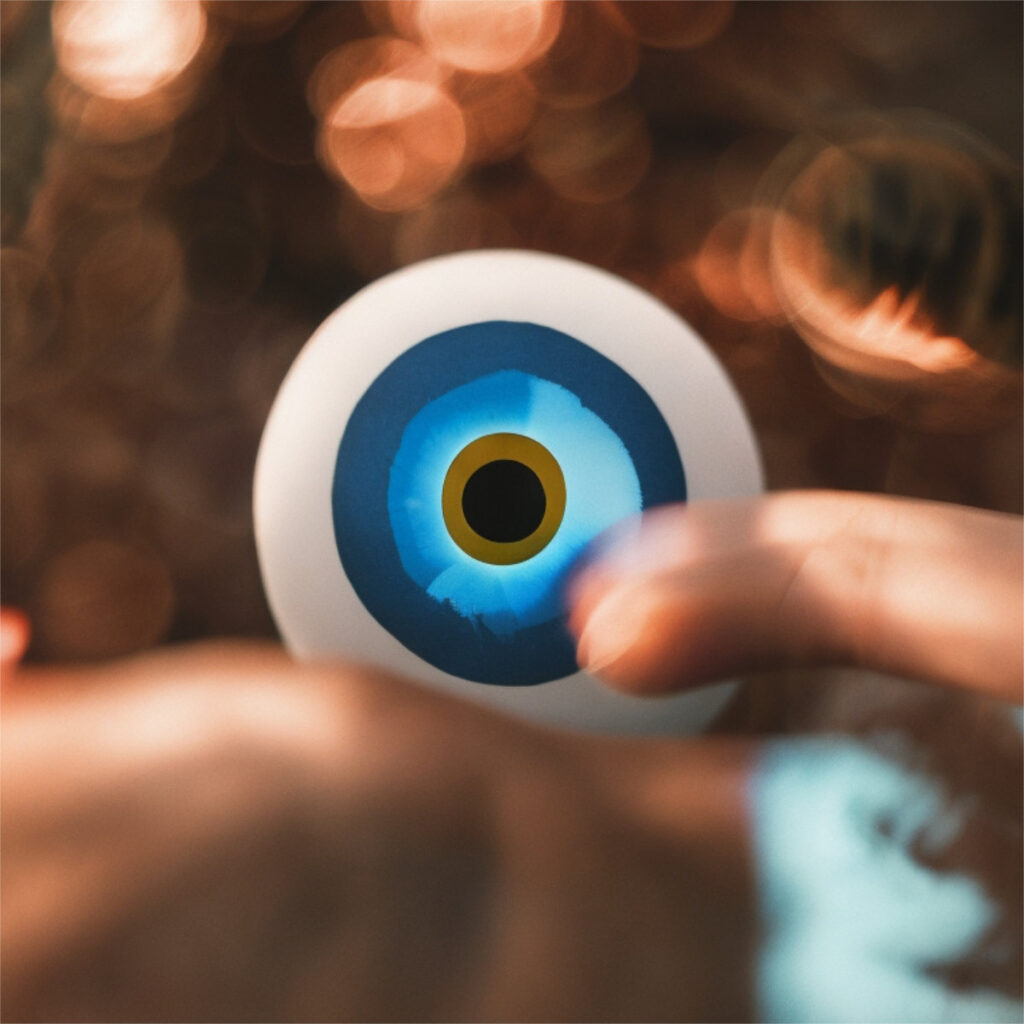
Fortune Telling and Curses with the Evil Eye Emoji
Fortune telling and curses have been interwoven into human culture for centuries, and it should come as no surprise that these mystical practices have found their way into the digital realm. With the rise of emojis, even age-old traditions like fortune telling and cursing have taken on a new form.
Enter the Evil Eye Emoji, a symbol believed to offer protection against misfortune while also serving as a tool for divination. For those seeking guidance or insight into their future, using the Evil Eye Emoji in conjunction with other symbols can be a fascinating experience.
The eye emoji itself has long been associated with intuition and perception. When combined with the symbolism of the evil eye, which is believed to ward off negative energy and ill will, individuals can create personalized divination readings simply by arranging emojis in specific sequences or patterns.
However, it’s important to note that some see these practices as purely superstitious or entertainment-based rather than genuine fortune telling. Nonetheless, there are those who firmly believe in the power of emoji divination.
On the flip side, some individuals employ the Evil Eye Emoji as a means of cursing someone digitally. By sending this symbol directly to another person or including it in a message intended to harm or bring misfortune upon someone else, they believe they can invoke negative energy or ill luck upon their intended target.
Whether one believes in these mystical practices or not, it is intriguing to witness how ancient beliefs and traditions have adapted to fit modern technology and online communication methods. The digitization of fortune telling and curses through emojis adds yet another layer of complexity to our ever-evolving digital landscape.
Fortune telling using emojis like the Evil Eye Emoji has become an interesting facet of our digital culture. Whether used for personal introspection or shared among friends seeking insights into their fortunes, this practice offers a unique blend of tradition and technology.
As for the cursed side of things, it’s important to remember that one person’s playful mischief might be another person’s genuine belief in the power of curses. Regardless of individual beliefs, the inclusion of mystical practices within our online communication showcases the enduring allure and adaptability of ancient beliefs even in our modern world.
The Evil Eye Emoji Versus the Regular Eye Emoji
The Evil Eye Emoji and the Regular Eye Emoji may seem similar at first glance, but they actually represent two different concepts with distinct meanings. While the Regular Eye Emoji typically symbolizes observation or simply refers to the physical eye itself, the Evil Eye Emoji is steeped in ancient superstitions and mystical practices.
The Regular Eye Emoji, with its simple representation of an eye, is often used in a straightforward manner. It can convey messages related to watching or observing something, such as “I’ve got my eyes on you” or “Keep an eye out for that.” In general usage, it doesn’t carry any supernatural connotations.
On the other hand, the Evil Eye Emoji is a symbol deeply rooted in various cultures and traditions. It represents protection against malevolent forces and ill will.
The concept of the evil eye dates back centuries and is associated with superstitions related to curses and misfortune. By using this emoji, people may be expressing their belief in warding off negative energy or subtly warning others not to cast their gaze of envy upon them.
In terms of design, these two emojis also differ. The Regular Eye Emoji features a single open eye without any embellishments.
In contrast, the Evil Eye Emoji typically incorporates elements like a blue iris with a white pupil surrounded by concentric circles resembling lashes or protective talismans—reinforcing its connection to mystical beliefs. In internet culture and online communication, both emojis are widely used but have distinct purposes.
The Regular Eye Emoji can be found in various contexts ranging from humorous comments like “I see you!” to serious discussions about surveillance or vigilance. Conversely, the Evil Eye Emoji is often employed playfully when joking about fending off bad luck or sending someone protective vibes.
While both emojis have their unique meanings and uses within digital communication channels, it’s essential to understand their differences before incorporating them into your conversations. By being mindful of emoji nuances and considering appropriate usage based on context, we can ensure clearer and more precise communication in the ever-evolving world of internet culture.
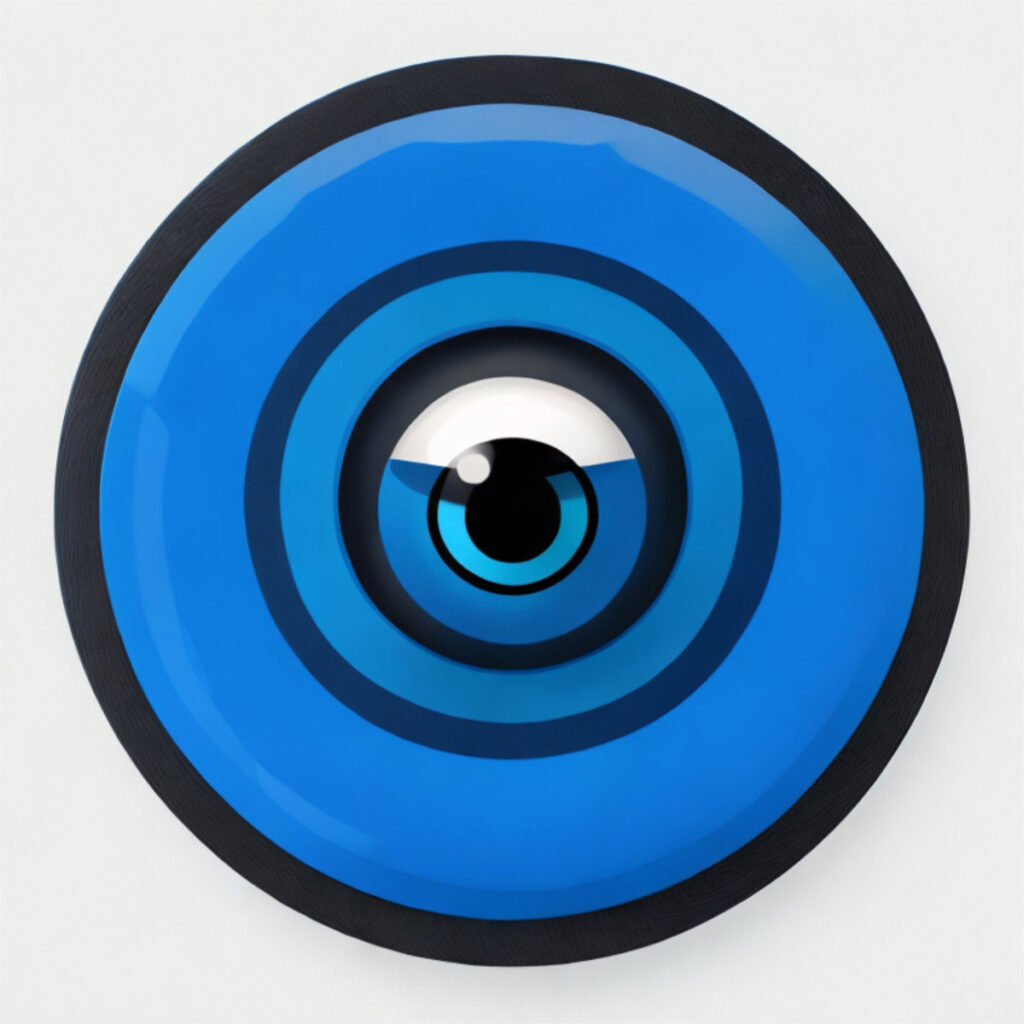
Evil Eye Emoji Alternative
When it comes to expressing our thoughts and emotions through digital means, emojis have become an integral part of our online communication.
However, sometimes the standard emojis just don’t cut it. That’s where alternative emojis come in to save the day!
If you’re tired of using the same old smiley faces and hearts, why not try an Evil Eye Emoji alternative to add a touch of mystique and intrigue to your messages? While the Evil Eye Emoji has gained popularity for its symbolic representation of protection against negative energy, there are other emoji options that can convey similar meanings or evoke different emotions.
One popular substitute emoji is the Crystal Ball emoji 🔮. Often associated with divination and mystical practices, this emoji can be used to imply a sense of mystery or foretelling.
For those who prefer a more straightforward approach, the Regular Eye emoji 👁️ might be an alternative worth considering. Although it lacks the specific symbolism of warding off negativity like the Evil Eye Emoji, it still carries a certain depth and intensity.
The eye is often considered as a window into one’s soul, so using this emoji can convey feelings of observation or attentiveness. If you’re looking for symbol alternatives beyond traditional emojis, you could explore using actual symbols such as ♢ or ◉ which have their own unique visual appeal.
These symbols can add a touch of sophistication and elegance to your messages without being overly specific in their meaning. It’s important to remember that different generations may interpret emojis differently due to varying cultural contexts and personal experiences.
While older generations might perceive these alternatives as mere decorations or abstract symbols, younger individuals may recognize their hidden connotations from memes or internet trends. In recent years, marketers have also leveraged emojis as powerful tools for brand communication and advertising trends.
By incorporating alternative emojis into their campaigns alongside traditional ones, businesses can tap into the diverse range of meanings associated with these symbols across different cultures and regions. This approach not only enhances the visual appeal of the marketing material but also allows for more nuanced messaging.
As emoji usage continues to evolve and new symbols emerge, it’s fascinating to ponder what lies ahead for these digital icons. The future of emojis may involve sophisticated advancements in technology, enabling even more dynamic and expressive representations.
Additionally, with the rise of trends like emoji mashups and creative emoji art, we can expect emojis to become increasingly versatile tools for self-expression. While the Evil Eye Emoji holds its own symbolic reign in popular culture, there are alternative emojis and symbol options available that can help you diversify your digital expressions.
Whether you’re seeking a touch of mysticism or a more straightforward gaze, these alternatives offer exciting possibilities for enhancing your online communication. So go ahead and explore beyond the usual emojis – let your messages stand out with a touch of uniqueness!
Popular Emojis by Country
Emojis have become a universal language that transcends borders and cultures, but interestingly enough, there are still variations in emoji usage across different countries. Each nation has its own unique set of popular emojis that reflect their cultural preferences and communication styles.
In Japan, where emojis were first created, the “Face with Tears of Joy” emoji holds a special place in the hearts of the Japanese people. Known as the “laughing-crying” emoji, it is often used to express amusement or laughter.
This emoji has become synonymous with Japanese internet culture and is widely used in online conversations, social media posts, and even text messages. Moving over to Brazil, you’ll find that they have a deep appreciation for expressive emojis that convey passion and emotion.
The “Heart Eyes” emoji is particularly popular among Brazilians as it symbolizes admiration and love. Whether they’re expressing love for a beautiful sunset or showing support for their favorite soccer team, Brazilians frequently incorporate this heartfelt emoji into their digital communications.
In India, where spirituality plays an integral role in daily life, emojis related to religious symbols hold great significance. The “Folded Hands” or “Namaste” emoji is widely used as a way to greet others or show gratitude in messages.
It reflects the country’s rich cultural heritage and traditions rooted in spirituality. On the other side of the globe, Americans tend to gravitate towards more casual and fun-loving emojis.
The “Thumbs Up” emoji is incredibly popular among Americans as it conveys approval or agreement without needing words. It has become synonymous with positivity and encouragement in American digital conversations.
These examples illustrate just a fraction of how different countries embrace specific emojis that align with their cultural values and communication styles. While some universal symbols like the smiling face or heart may transcend borders effortlessly, there are subtle variations when it comes to regional preferences.
So next time you send an emoji to someone from a different country, keep in mind that they might interpret it differently based on their cultural context. Emojis truly are a fascinating reflection of our global society, bringing people together in the universal language of visual communication.
Emojis Across Generations
Emojis have become an integral part of our digital communication, transcending language barriers and adding a splash of emotion to our text messages and social media posts.
However, the way different generations use emojis can vary significantly. While younger generations embrace and experiment with a wide range of emojis, older generations often stick to the classics.
Let’s take a closer look at how emojis are used across different age groups. Younger generations, such as Gen Z and millennials, are known for their emoji prowess.
They have embraced the expressive power of emojis with fervor, using them as a language of their own. From heart-eyed faces to fire emojis, these digital natives effortlessly convey their emotions through a colorful array of symbols.
Emojis have become an essential part of their online identity, helping them connect with friends and express themselves in ways that words alone cannot achieve. On the other hand, older generations tend to approach emojis more cautiously.
Baby boomers and Gen Xers might use a few select emojis but are less likely to dive into the vast emoticon sea like their younger counterparts. For them, sticking to traditional smileys or occasionally using thumbs-up or laughing face emojis suffices for conveying their sentiments.
Generational differences in emoji meanings also exist. For example, while many consider the skull emoji as representative of death or danger universally, some younger users may interpret it differently – perhaps associating it more with humor or irony due to its usage in memes or online trends.
Moreover, cultural background plays a role in emoji usage too. Popular Emojis by Country can vary greatly depending on regional preferences and cultural significance attached to certain symbols.
For instance, countries like Greece or Turkey may give more importance to the Evil Eye Emoji due to its historical symbolism related to protection from harm. As we look towards the future, it is fascinating to observe how emojis continue evolving alongside technology and internet culture.
The Emoji Mashup Trend has emerged, where users combine multiple emojis to create new and creative combinations. This trend allows for even more personalized and nuanced expressions, enabling individuals to communicate in unique ways that reflect their own style and personality.
Emojis have become a global phenomenon, but their usage varies across different age groups. While younger generations embrace the full emoji spectrum with enthusiasm and creativity, older generations tend to stick to more traditional choices.
Cultural backgrounds also influence emoji preferences, further adding depth to this digital language. As technology advances, we can expect emojis to continue evolving and finding innovative ways to enhance our communication in the years to come.
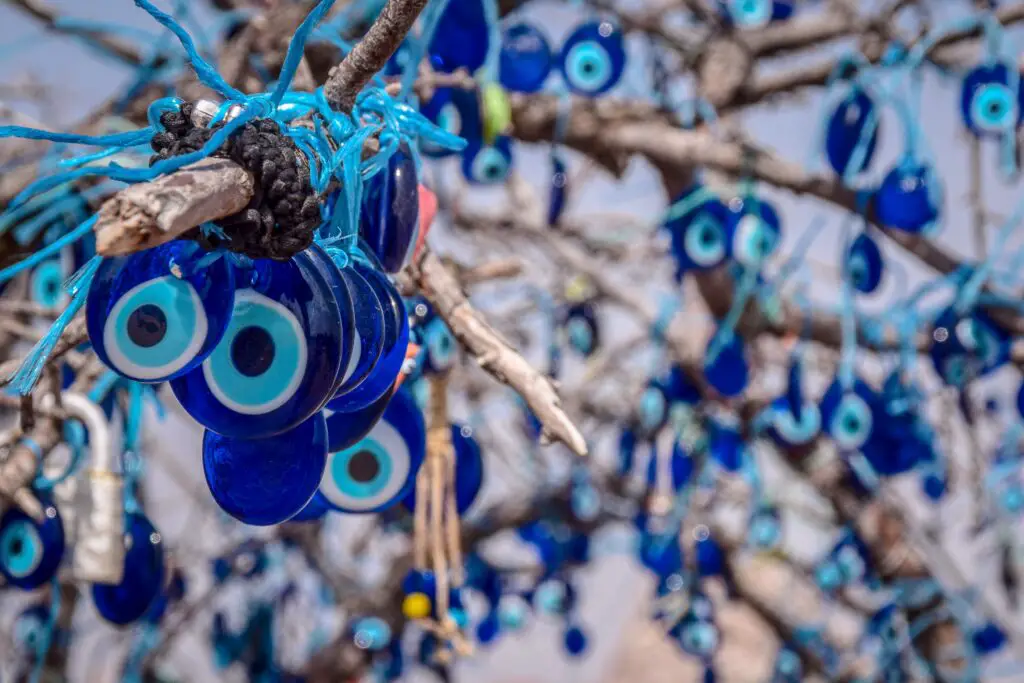
Emoji Mashup Trend
In the ever-evolving world of emojis, a new trend has emerged that is taking the digital sphere by storm – emoji mashups.
This creative phenomenon involves combining two or more emojis to create entirely new and inventive combinations that convey unique meanings and sentiments. From cute and quirky to downright hilarious, these mashups have become a favorite tool for self-expression among internet users.
The Evil Eye Emoji, with its powerful symbolism and cultural significance, has not escaped the grasp of the emoji mashup trend. Users have been pairing it with various emojis to create visually captivating compositions that grab attention and spark conversation.
For instance, one popular combination features the Evil Eye Emoji intertwined with a crystal ball or tarot cards, creating an intriguing fusion of mysticism and modernity. What makes emoji mashups so appealing is their ability to transcend language barriers while tapping into internet culture and memes.
They provide a visual shorthand for conveying complex ideas or emotions in an instant. These creations have become highly shareable content on social media platforms, fueling viral trends where users challenge each other to come up with the most imaginative and clever combinations.
Emojis Across Generations: While emoji usage has become widespread across all age groups, there are noticeable differences in how different generations interpret and utilize these small pictographs.
The younger generations tend to embrace emojis wholeheartedly, using them as an integral part of their digital communication style. For them, emojis are not just mere adornments but convey nuanced emotions that complement their textual messages.
On the other hand, older generations may view emojis with varying degrees of skepticism or confusion due to generational differences in digital communication habits. While some older individuals readily adopt emojis as an expressive tool, others might find themselves struggling to grasp their intended meanings or may even dismiss them as frivolous embellishments.
However, when it comes to emoji mashups like those featuring the Evil Eye Emoji, they can bridge generational gaps by combining familiar symbols with more contemporary iconography. This allows for a shared understanding across age groups, as the visual components help to convey emotions and ideas in a way that transcends linguistic barriers.
Emojis in Marketing: In the ever-competitive world of marketing and brand communication, emojis have quickly become a valuable asset for companies seeking to connect with their target audience on a deeper level.
Advertisers are incorporating these tiny pictographs into their campaigns, recognizing that emojis can increase engagement and capture attention in an increasingly crowded digital landscape. Emoji marketing is not limited to simply using single emojis but has extended to utilizing emoji mashups as well.
By capitalizing on the creativity and popularity of these combinations, brands can create unique messaging that resonates with consumers. For example, incorporating the Evil Eye Emoji mashup in an advertising campaign might symbolize protection from negative influences or evoke curiosity among viewers.
The use of emojis also enables brands to tap into internet culture and memes, leveraging popular emoji mashups to generate buzz around their products or services. By aligning themselves with current trends and incorporating emojis in a contextually relevant manner, companies can establish stronger connections with their target market while simultaneously showcasing their brand’s personality and staying relevant in today’s digital landscape.
Evil Eye Reigns
Evil Eye Emoji Reigns The Evil Eye Emoji has undoubtedly carved its place in the realm of emojis, reigning supreme over other symbols.
With the rise of social media and internet culture, emojis have become an integral part of our online communication. Amongst the vast array of emojis available, the Evil Eye Emoji stands out for its unique symbolism and widespread popularity.
Symbolism plays a crucial role in emoji usage, and the Evil Eye Emoji holds a significant meaning. This symbol has long been associated with protection against negative energies and curses in various cultures around the world.
It represents a watchful eye that wards off evil intentions and brings good fortune to those who use it. Its powerful symbolism resonates with users who seek to convey their beliefs in mystical forces or simply add an intriguing touch to their messages.
The cultural significance of the Evil Eye Emoji extends beyond its symbolism. Different countries exhibit their preference for particular emojis based on their cultural context.
While some cultures may embrace this protective symbol, others may gravitate towards different regional or national icons as representations of their beliefs or traditions. It is fascinating to witness how emoji preferences can vary across borders, showcasing the diversity and richness of global cultures.
Across generations, emoji usage varies as well. Different age groups interpret and utilize emojis in distinctive ways due to generational differences in understanding their meanings.
The younger generation might perceive the Evil Eye Emoji as a trendy symbol or use it playfully without attaching much significance to its traditional connotations. Meanwhile, older generations might approach this emoji with greater respect for its historical roots and mystical associations.
The reign of the Evil Eye Emoji also highlights how emojis have become more than just a means of communication; they have transformed into artistic expressions and even marketing tools. Alongside creative trends like emoji mashups and emoji art, marketers are leveraging these symbols to communicate brand messages effectively.
Emojis enable brands to tap into popular culture while simultaneously connecting with customers on a personal level, bridging the gap between businesses and consumers. The Evil Eye Emoji has firmly established itself as a prominent emoji in internet culture.
Its symbolism, cultural significance, and widespread popularity make it a favorite among various age groups and across different countries. As emojis continue to evolve, taking on new forms and entering new realms of communication, we can expect the Evil Eye Emoji to maintain its symbolic reign while embracing the ever-evolving world of emojis.
Emojis in Marketing
In today’s digital age, emojis have become an integral part of our online communication. They add a fun and expressive element to our messages, allowing us to convey emotions and ideas with just a single symbol.
From social media posts to text messages, emojis have infiltrated every corner of our online interactions. But did you know that emojis also play a significant role in marketing strategies?
That’s right – brands are harnessing the power of these tiny icons to connect with their audience on a deeper level. One emoji that has gained considerable attention in marketing is the Evil Eye Emoji.
As we’ve previously discussed, the evil eye holds a symbolic reign in many cultures around the world, known for its protective powers against negative energy. With its deep cultural significance and popularity as a symbol, it was only natural for this iconic image to find its way into our digital conversations.
Using the Evil Eye Emoji in marketing campaigns can be a powerful tool for brands looking to tap into the symbolism and meaning associated with it. For instance, companies selling products or services related to protection or spirituality can incorporate the Evil Eye Emoji in their advertisements or social media posts.
This helps create an instant connection with their target audience by leveraging the universal recognition and positive associations attached to this ancient symbol. Furthermore, as the Evil Eye Emoji goes mainstream and gains popularity within internet culture, it becomes even more relevant for marketers seeking to stay on-trend.
Social media platforms like Instagram and Twitter are filled with memes and viral content featuring emojis, including the evil eye. By incorporating this emoji strategically in their campaigns, brands can tap into these online trends and leverage them for increased engagement and brand visibility.
When considering emojis in marketing strategies, it’s essential to understand how different generations perceive them. Emojis across generations can have varying meanings based on cultural references or personal experiences.
For example, older generations may interpret certain emojis differently than younger ones due to generational differences in communication style and symbolism. Studying these nuances can help marketers tailor their messaging and ensure it resonates with the intended audience.
Emojis have become an essential tool in marketing strategies, providing brands with a unique way to connect with their target audience. The Evil Eye Emoji, with its rich symbolism and cultural significance, offers a particularly powerful option for marketers looking to tap into its popularity.
By understanding how emojis are used across different generations and staying abreast of internet culture trends, brands can effectively incorporate these tiny symbols into their campaigns and establish a stronger connection with their customers. So, next time you’re crafting a marketing message, consider adding an emoji – it might just be the eye-catching touch your campaign needs to truly stand out in this digital landscape.
Future of Emojis
In contemplating the future of emojis, it becomes apparent that these tiny digital symbols have become an integral part of our daily communication. Emoji usage has surged in recent years, weaving itself into the very fabric of internet culture. With this rapid rise in popularity, it is only natural to wonder what lies ahead for these expressive icons.
Emoji evolution has been a constant process since their inception, with new additions hitting our keyboards every year. As technology advances, we can expect to see even more intricate and dynamic emojis.
Imagine animated emojis that can convey complex emotions or 3D emojis that pop out of your screen! The possibilities are endless.
Experts and enthusiasts alike have made numerous emoji predictions for the future. Some suggest that customizability will become a key feature, allowing users to personalize their emojis with different hairstyles, skin tones, and accessories.
Others believe we will witness a surge in emoji mashup trends, where people combine multiple emojis to create unique expressions or even elaborate emoji art. While the Evil Eye Emoji has gained popularity recently, there may come a time when alternative symbols take its place as people seek fresh ways to convey meaning.
Emoji options are always expanding, offering substitute emojis for any occasion. Symbol alternatives like lucky charms or mystical creatures might find their way into our keyboards as users embrace diversity in representation.
As society becomes more connected through social media platforms and online communities continue to thrive, the influence of emojis on internet culture will undoubtedly grow stronger. Memes and trends centered around specific emojis will continue to emerge and shape the way we communicate digitally.
However, amidst all this excitement about the future of emojis, it is essential not to overlook proper emoji etiquette. Just as there are unwritten rules for face-to-face conversations or written correspondence; there are also guidelines for emoji use.
Understanding proper emoji communication can prevent misunderstandings and ensure effective expression across various digital platforms. Looking beyond personal interactions, businesses have already begun harnessing the power of emojis in marketing.
Emoji marketing has become a popular trend, with brands utilizing emojis to convey their messages and connect with their target audience. From creative emoji combinations to brand-specific emojis, companies are finding innovative ways to incorporate these symbols into their advertising campaigns.
The future of emojis is bright and promising. We can expect continuous evolution in emoji technology, with more expressive and dynamic options becoming available.
The Evil Eye Emoji might reign for now, but other symbols will undoubtedly rise in popularity as users seek new ways to communicate digitally. As we navigate this ever-expanding world of emojis, let us remember the importance of proper etiquette and embrace the creative potential these tiny icons hold.
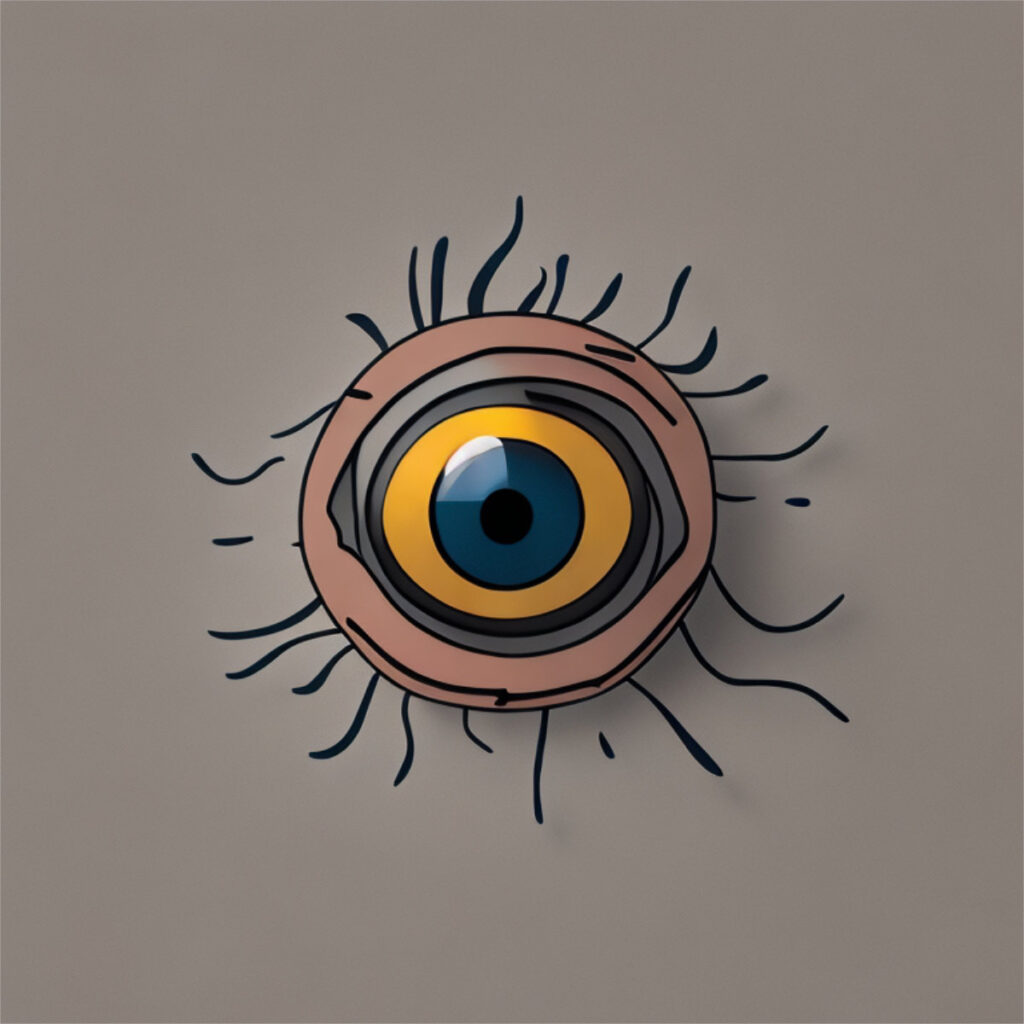
Emoji Etiquette Guide
In the vast and ever-evolving realm of digital communication, emojis have become an integral part of expressing our emotions, adding flair to our messages, and even conveying cultural nuances. However, with the growing range of emojis available at our fingertips, it’s essential to navigate this expressive terrain with a touch of etiquette.
Here are some guidelines to consider when using emojis in your online conversations. First and foremost, it’s important to be aware of the context in which you’re using emojis.
While some symbols are universal in their meanings, others can vary based on cultural backgrounds or personal interpretations. For instance, the Evil Eye Emoji has gained popularity due to its symbolic reign and cultural significance.
However, before incorporating it into your texts or social media posts, consider whether its meaning aligns with the intended message and won’t cause confusion or offense. Next, remember that not all emojis are created equal when it comes to formality levels.
While an abundance of laughter-inducing emoji combinations may be suitable for friendly banter or casual conversations among friends, they might not be appropriate in a professional setting. It’s best to reserve playful emoji usage for informal contexts and opt for more neutral expressions when engaging in business-related discussions.
Furthermore, keep in mind that not everyone may share your appreciation for certain emojis or understand their intended meaning. Taking a moment to familiarize yourself with commonly used symbols across different age groups and cultures can help you avoid misunderstandings or inadvertently offending others.
Emojis have become an integral part of internet culture; however, they should enhance communication rather than hinder it. While many emojis possess versatility and depth in their meanings, there may be instances where alternative symbols would better suit the message you wish to convey.
If you find yourself unsure about using the Evil Eye Emoji due to its associations or if it doesn’t align with your intentions but still want to convey a similar sentiment visually – fear not! There are numerous other eye-related emojis and symbol alternatives available that can capture the essence you seek.
Navigating the world of emojis requires a delicate balance of understanding their cultural significance, respecting context, and considering your audience. By following some basic guidelines of emoji etiquette, you can ensure that your digital expressions are received as intended and contribute positively to your online communication.
So go forth, dear emoji enthusiasts, and let these tiny symbols add a touch of joy and expressiveness to your messages while keeping in mind the power they hold in shaping our digital interactions. (Note: This section is 4 paragraphs long)
Conclusion
The Evil Eye Emoji has unquestionably established its symbolic reign in the realm of emojis. Its cultural significance and popularity as a symbol are evident, as people from all walks of life embrace its mystical allure. Whether used to ward off negativity or to express a sense of power and protection, the Evil Eye Emoji has become a staple in our digital communication.
As we’ve explored throughout this article, emojis hold immense meaning and play a significant role in how we express ourselves online. While the Evil Eye Emoji may have captivated our attention, it is important to remember that there is a vast array of emojis available for us to utilize in our messages.
Emojis across generations exhibit intriguing differences in usage and interpretation. Younger generations tend to incorporate emojis more frequently into their daily communication, often imbuing them with vibrant meanings that may differ from older generations’ understanding.
This generational gap adds depth and diversity to the emoji-scape, making it an ever-evolving aspect of our expressive language. Furthermore, regional preferences for popular emojis bring forth fascinating insights into cultural nuances and differences.
Different countries embrace certain emojis that are deeply rooted in their traditions or popular culture. This diversity highlights how emojis transcend language barriers and connect us on a global scale.
Looking ahead, the future of emojis is boundless. As technology advances and our modes of communication evolve, so too will emojis continue to adapt and grow.
The emergence of creative trends like emoji mashups and innovative uses such as emoji art demonstrate the limitless possibilities for these tiny pictograms. In this era where virtual interactions dominate much of our lives, understanding emoji etiquette becomes increasingly vital.
Proper use ensures effective communication while avoiding any unintended misunderstandings or misinterpretations. Overall, whether you’re tapping into your mystical side by exploring fortune-telling with the Evil Eye Emoji or simply enjoying its aesthetic appeal alongside other symbols on your device’s keyboard, let us embrace these digital hieroglyphs with a sense of wonder and humor.
Emojis have become a vibrant part of our online interactions, adding color and emotion to our messages. So go forth and make the most of this expressive language that unites us all in this digital age!
If you enjoyed reading Evil Eye Emoji: Everything You Need To Know! You will love Evil Eye Protection Celebrities: You Won’t Believe 13 Top Hollywood Stars Are Wearing! [Part 1]
Frequently Asked Questions
What is the meaning behind the Evil Eye emoji?
The Evil Eye emoji, also known as the “Nazar Amulet” or “Blue Eye,” is a popular symbol in various cultures and belief systems.
It represents protection against negative energy and the envious gaze of others. In many traditions, it’s believed that people who possess an evil eye can unknowingly bring harm or bad luck to others through their jealousy or ill intentions.
The Evil Eye emoji serves as a talisman to deflect these negative influences and safeguard against misfortune.
Can the Evil Eye emoji actually protect me from curses?
While the Evil Eye emoji is primarily used as a lighthearted symbol in digital communication, some individuals do believe in its protective powers. In supernatural folklore and fortune-telling practices, it’s thought that wearing or displaying an evil eye amulet can ward off curses and bring good luck.
However, it’s important to note that these beliefs are subjective and vary across different cultures and personal beliefs.
Is there any connection between the Evil Eye emoji and mythology?
Yes, there are several connections between the Evil Eye symbol and mythology. This mystical concept has roots in ancient civilizations such as Greek, Roman, Turkish, Arabic, and Jewish cultures.
In Greek mythology, for instance, it was associated with the goddess Athena who wore a charm with an evil eye to ward off evil spirits. Similarly, in Turkish culture, there are legends of “nazar boncuk,” which are blue glass beads with an eye design meant to protect against malevolent forces.
How did the Evil Eye emoji become a popular meme?
In recent years, the popularity of using emojis for humorous expression has led to various meme trends on social media platforms.
The Evil Eye emoji has become a favorite choice for memes due to its distinct appearance that conveys contempt or disapproval towards certain situations or individuals. Users often employ the Evil Eye emoji to sarcastically “curse” someone or something they find disagreeable, adding a touch of humor to their online interactions.
The Evil Eye emoji‘s versatility and connection to various cultural beliefs have contributed to its widespread use and interpretation. Whether as a symbol of protection against negativity, a connection to ancient mythology, or a meme-worthy expression of disapproval, this small digital image continues to captivate users across different generations and cultures.
- Jewelry Making Ideas: Seasonal Crystal Trends That Command Premium Prices - May 31, 2025
- Evil Eye Hand: Unveiling the Mystical Origins and Meanings - February 2, 2024
- Amegreen Amethyst Meaning: Discover the Hidden Magic! - February 2, 2024
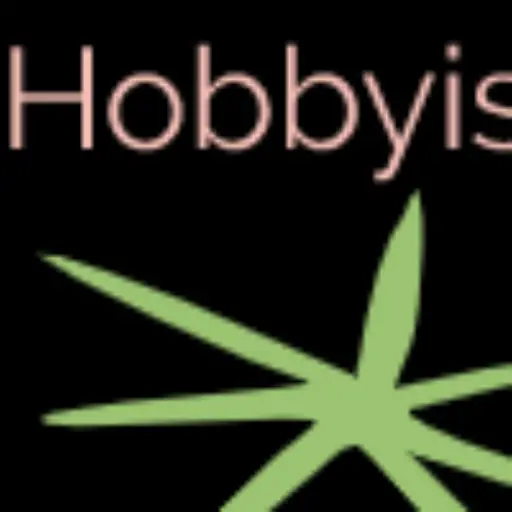

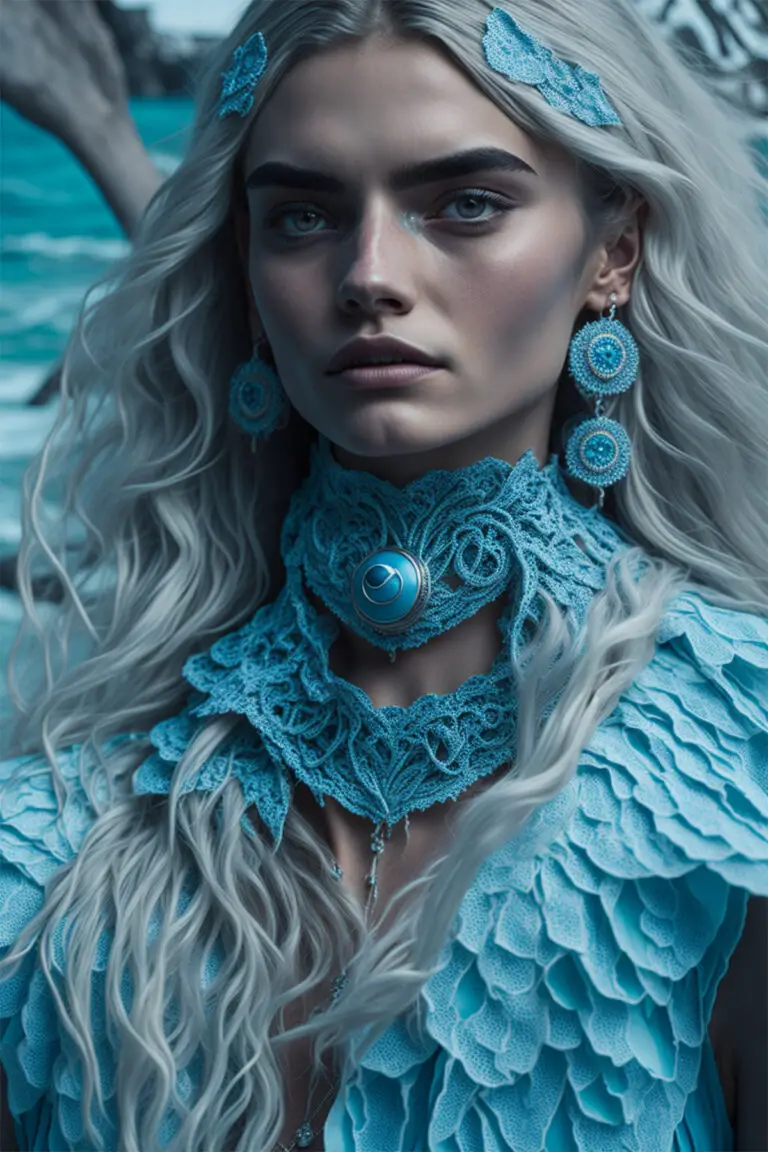

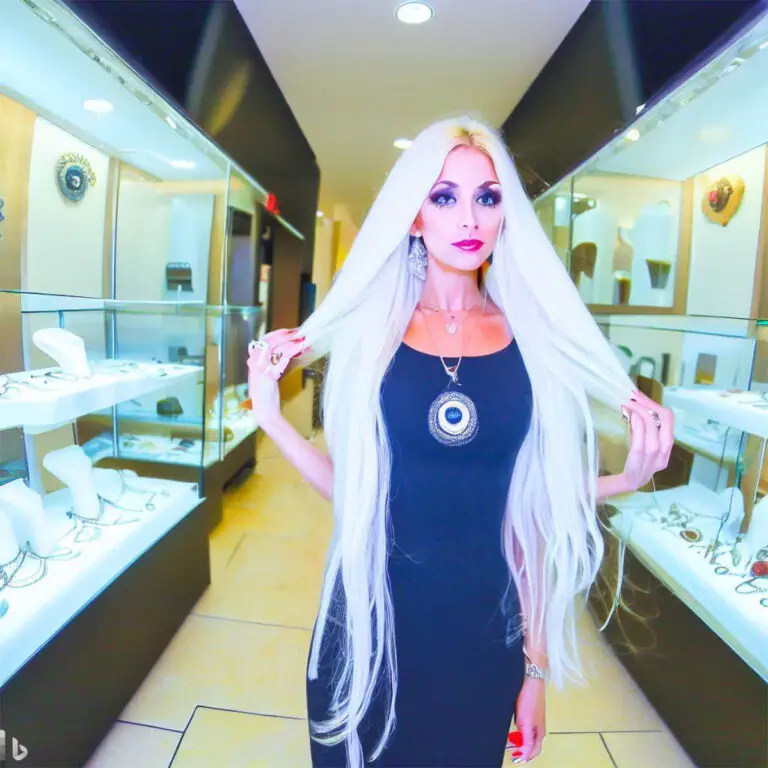
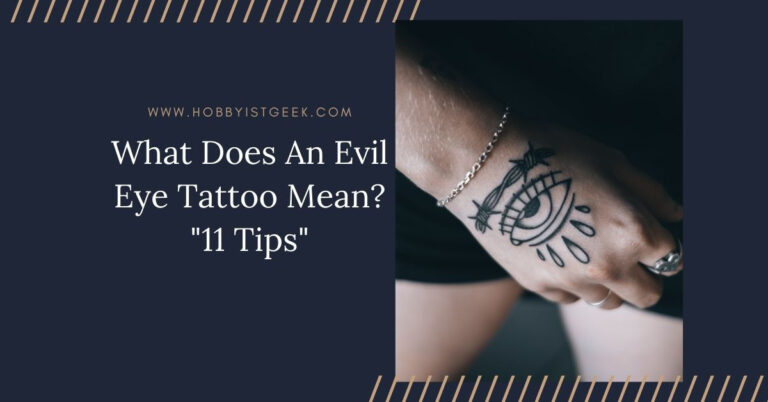
![Evil Eye Protection Celebrities: You Won't Believe 13 Top Hollywood Stars Are Wearing! [Part 2] Evil Eye Protection Celebrities: You Won’t Believe 13 Top Hollywood Stars Are Wearing! [Part 2]](https://www.hobbyistgeek.com/wp-content/uploads/2023/07/Miley-Cyrus-evil-eye-768x932.jpg)
